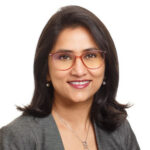Your Most Common Liposuction Questions Answered

Liposuction is a highly popular fat reduction method that can help contour different parts of your body! There are several questions and myths that surround the procedure. Here are some of the myths I’ve come across during patient consultations:
Liposuction is a weight loss tool
While liposuction effectively removes pockets of stubborn fat that you can’t get rid of with diet and exercise, it is not a weight loss tool. Common problem areas treated with liposuction include the abdomen, flanks, hips, back, and thighs. For the best results from your liposuction procedure, you should be within your ideal weight range and be committed to a healthy lifestyle before and after the procedure.
Liposuction is only for women
Cosmetic procedures are popular among women, however, that doesn’t mean they’re not for men! Men can benefit from liposuction to recontour their figure and remove stubborn fat, just like women can. With liposuction for men, the male figure is taken into consideration to sculpt a masculine, toned physique.
Liposuction gets rid of cellulite, stretch marks or sagging skin
Despite popular belief, the presence of cellulite is not due to fat alone, but connective tissue causing dimpling in the skin. Liposuction is not meant to treat cellulite. Similarly, it is not effective at treating stretch marks or sagging skin. In fact, these problems may worsen after liposuction.
The fat will return after liposuction
Once fat cells are removed during the liposuction process, they are removed permanently. This means you can still gain weight in untreated areas, so maintaining a healthy weight after treatment is very important if you want to ensure long-lasting results. In addition, with a significant weight gain (over 10-20 lbs), the existing fat cells in the treated areas can become larger, reversing some of the benefits.
In addition, here are the most common questions about liposuction:
What does liposuction entail?
Liposuction is an invasive procedure that involves a series of small incisions less than one centimeter long. Most commonly, it is done using tumescent technique that reduces bruising and blood loss. First, a diluted fluid of numbing medicine (local anesthetic) and epinephrine (capillary constrictor) is injected into the area being treated. Thin metal tubes called cannulas are then inserted into the body through tiny incisions in the skin. The surgeon attaches the cannula to suction and remove the unwanted fat.
Is it right for me?
As discussed earlier, an ideal candidate is a healthy individual close to their ideal body weight who has stubborn pockets of fat that have not responded to diet and exercise. Although liposuction can improve body contour at any weight, those with a body mass index (BMI) over 30 are typically not good candidates for the treatment.
Another important thing to consider is your skin’s elasticity. In general, young patients, who are non-smokers with minimal sun damage, have the best elasticity. With aging, our skin loses its ability to bounce back after being stretched, so older patients or those removing a large amount of fat could be left with sagging skin following the procedure
What is the recovery like?
Unless it’s a very high volume liposuction, you should be able to go home the same day after liposuction. Pain and discomfort depends on the amount of liposuction performed. Usually, the significant pain lasts for the first 2-3 days, and mild pain may persist for several weeks. Patients may also experience tingling and numbness in the areas treated for a few weeks. Most doctors recommend taking at a week off from work and your regular routine. (Those who undergo a small amount of liposuction may only need a few days.) To prevent blood clots and discourage swelling, light walking is usually recommended starting the day of surgery. Heavy exercise and other strenuous activities should be avoided for two to three weeks.
You’ll likely see some results immediately after surgery, but swelling and bruising are normal and take weeks to resolve. Some residual swelling can persist for several months. It’s also common to have some weight gain due to swelling and the tumescent fluid that was injected. This resolves over time. Most people see final results six months after surgery, but you may continue to see improvements for up to a year.
The use of a compression garment is often recommended for anywhere from three to six weeks. These garments are beneficial for decreasing the amount of bruising and swelling, and helping loose skin to retract. The final result is achieved sooner with the use of these garments.
You will have a few small (less than a centimeter) incisions. Just like any other scar, they will mature over the first year. The scar can feel firm initially, but as it matures, it becomes soft, pale, flat, and less noticeable. Some people are prone to hypertrophic scars or keloids, which are abnormal scars that become prominent. If you or a family member has a tendency for these types of scars, please bring up this information at the time of your consultation.
What are the risks and trade-offs for liposuction?
Complications are infrequent with surgery performed by qualified surgeons for the right candidates. However, there are risks with any surgery. Bumpiness of the skin and contour irregularity can happen, especially after large volume liposuction. In addition, medical complications, such as blood clots to legs and lungs can occur, especially after prolonged surgery. Individuals with dark skin tone are also prone to dark pigmentation of the skin after liposuction.
Schedule a Consultation
If you are thinking about liposuction, or to schedule your consultation with Dr. Fichadia, contact our Portland, OR office today.
Dr. Fichadia is a double board-certified, comprehensively trained plastic and reconstructive surgeon. She completed general surgical training at St Elizabeth’s Medical Center, an affiliate of Tufts University School of Medicine in Boston, MA, and subsequently completed a highly competitive plastic surgery program at Oregon Health and Science University in Portland, OR. She has presented research from her time in Boston and Portland at national and international surgical meetings such as Clinical Congress of the American College of Surgeons and annual meeting of American Society of Plastic Surgery.
- Dr. Hetal Fichadiahttps://www.drfichadia.com/author/admin/
- Dr. Hetal Fichadiahttps://www.drfichadia.com/author/admin/
- Dr. Hetal Fichadiahttps://www.drfichadia.com/author/admin/
- Dr. Hetal Fichadiahttps://www.drfichadia.com/author/admin/
 (503) 488-2344
(503) 488-2344






